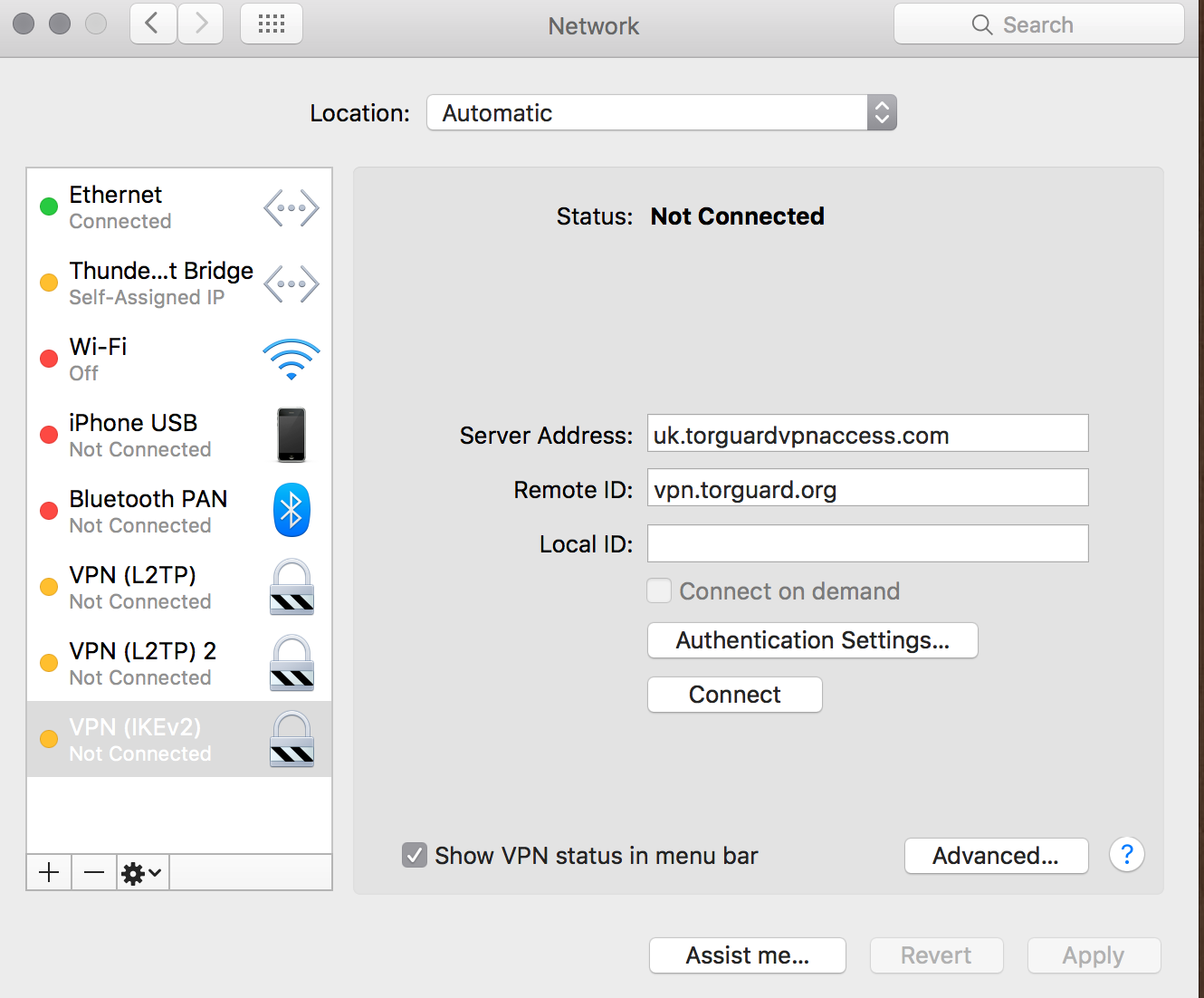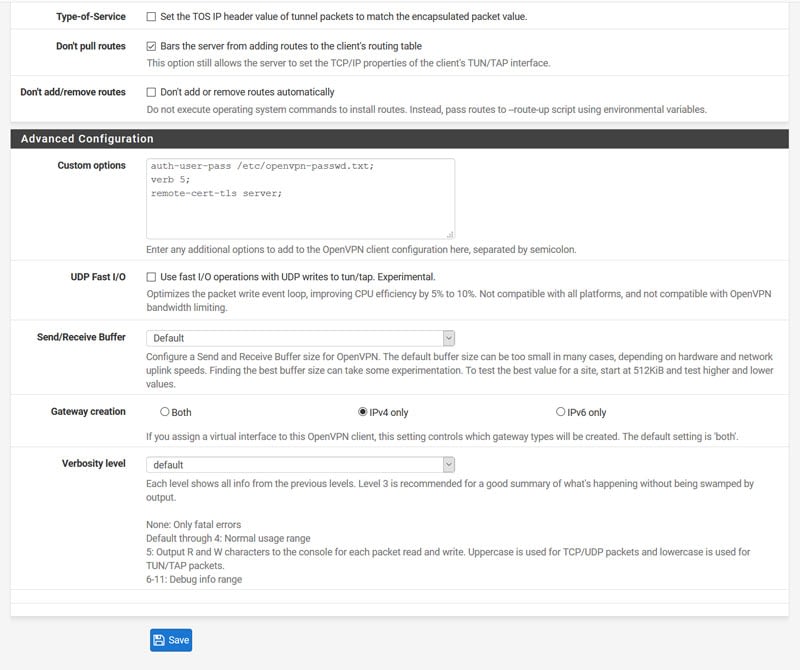

Open the file in Nano: nano /etc/rc.confĪnd add these two lines to the bottom of the file: openvpn_enable="YES" Now we need to configure the /etc/rc.conf file to start OpenVPN on startup, and use this config file. Once again hit Ctrl-O then Enter to save, then Ctrl-X to close the file. Edit the ca, auth-user-pass, and crl-verify lines to point to the files we created: ca /usr/local/etc/openvpn/ca.crtĪuth-user-pass /usr/local/etc/openvpn/pass.txtĬrl-verify /usr/local/etc/openvpn/crl.pem Nano will pop up, containing the OpenVPN configuration settings. Next, open the nf file that you moved here in Nano so we can edit it: nano nf
#SETUP FREENAS VPN TORGUARD PASSWORD#
Hit Ctrl-O then Enter to save, then Ctrl-X to close the password file. Once Nano opens, type in your PIA username and password in two lines, with no other content: p1234567 Next, create a file to hold your username and password called pass.txt: nano pass.txt Now copy the 'ca.crt' and 'crl.pem' files too: cp PIA/ca.crt. I chose US West.ovpn so that is what will be in the next steps.Ĭopy the 'US West.ovpn' file to the parent directory and rename it to 'nf' cp US\ West.ovpn.

Use the ls command to view the list of PIA servers, and decide which you want to use. Next, create a folder to hold the config files, extract them to this folder, and move to the folder: mkdir PIA

This puts "openvpn.zip" in your current directory ( /usr/local/etc/openvpn). Make a directory to hold the OpenVPN configuration files and move to it: mkdir /usr/local/etc/openvpnĭownload the PIA config files for OpenVPN: wget -no-check-certificate Jails: running 1 iocage jail (Plex) using danb35's script:Īdditional NIC: MELLANOX 10GB CONNECTX2 - MNPA19-XTR Take a look here: A post with Links to useful threadsĬonnected to: two 6Gb/s 24-port 3.Step 4: Configure OpenVPN to automatically connect on Jail startup Vdev-1 = 4 x 6 TB drives in RAID-z1 (4 WD Gold drives - WD6002FRYZ)īoot pool: 1 vdev with 2 x 40 GB notebook drives in mirror (2 drives total - FUJITSU MHW2040BS) Vdev-0 = 4 x 6 TB drives in RAID-z1 (4 WD Gold drives - WD6002FRYZ) Vdev-1 = 6 x 4 TB drives in RAID-z2 (6 Seagate Exos drives - ST4000NM0115) Vdev-0 = 6 x 4 TB drives in RAID-z2 (6 Seagate Exos drives - ST4000NM0115) Vdev-1 = 6 x 4 TB drives in RAID-z2 (6 Seagate Desktop drives - ST4000DM000-1F2168) Vdev-0 = 6 x 4 TB drives in RAID-z2 (6 Seagate Desktop drives - ST4000DM000-1F2168) HBA: LSI/Broadcom SAS9207-8i, 6Gbps SAS PCI-E 3.0 HBA - flashed to IT Firmware: 20.00.07.00Ĭonnected to: two 6Gb/s 24-port 3.5" mini-SAS expander backplanes (80H10024001A0) 128 GB of 16GB sticks Samsung brand PC3-12800R, DDR3 Registered ECC Processor: Intel Xeon E5-2650 V2, 2.6GHz 8 Core (16 thread) System board: SuperMicro Motherboard X9SRL-F, LGA 2011/Socket R, IPMI For a home NAS, this chassis is huge, able to hold 48 data drives and two boot drives with a couple spaces internally for non-hot-swap drives. The three pools in this one system represent the three NAS systems I had before the consolidation. I have even put together some hardware just to test things out a time or two.įor a while I had three systems, all at once, at home but I am making some hardware changes right now and only one NAS is online. I made some mistakes along the way, learned some and I try to share some of those lessons learned experiences here in the forum. This is the 8th FreeNAS unit I have built for home. This one was built in 2018, but I reused the name from a previous build.


 0 kommentar(er)
0 kommentar(er)
